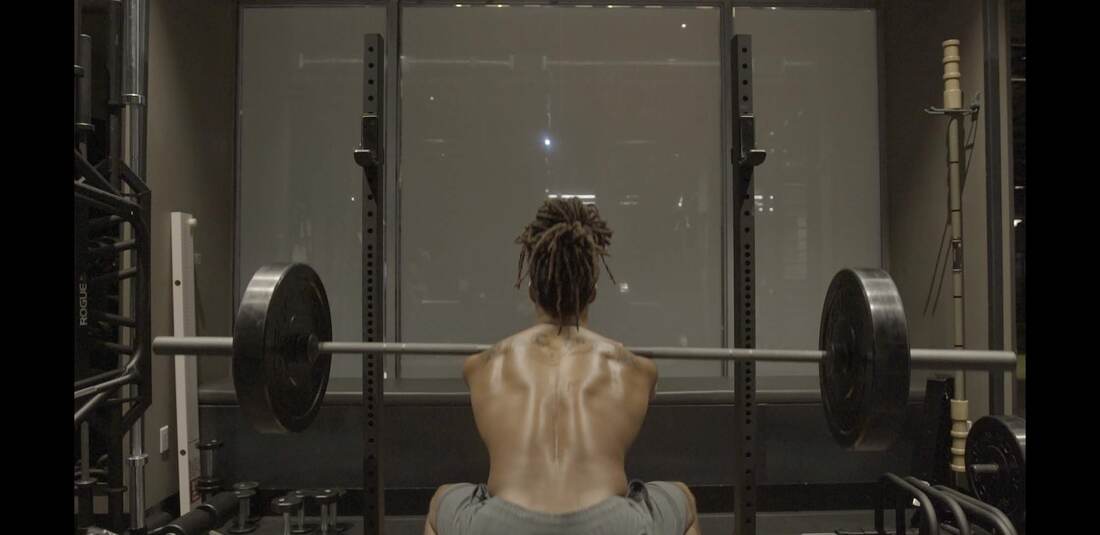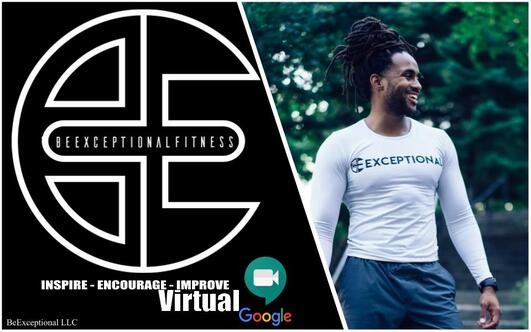Fitness & Athletics Instructor
One-on-One Personal Fitness Training Program
$100.00 - $3,300.00
With personal training, the focus is on what matters the most, you. Through Be Exceptional personal training sessions, you can expect to get:
*hourly savings apply with purchase of packages*
For more information click HERE
- A mobility, strength, lifestyle and body composition assessment
- Personalized Training program focusing on the following:
- Neuromuscular adaptation
- Cardiovascular efficiency
- Improving strength endurance
- Increasing lean body mass
- Decreasing body fat
- Health coaching techniques that will teach and reinforce a proper healthy lifestyle.
*hourly savings apply with purchase of packages*
For more information click HERE
Why you need a fitness & athletics gym instructor
Coaching an athlete is complicated. Thats why you need a proper gym instructor to help you. There are many factors, modalities, cognitive strain, and competitive planning strategies involved with coaching an athlete of any level – youth, novice, amateur, adult, or elite.
In the health and wellness space, sports performance coaches are critical to any athlete's success in the competitive arena. A few reason a sports performance coach like what we have at Be exceptional is the way you should go when aiming to gain guidance in your athletic training are as follows:
When introduced to a new athlete, we begin by learning the athlete's training, medical, and injury history and investigate their diet and social constraints that may influence training and focus.
Our coaches then give a thorough movement assessment, collecting visual data on strengths and weaknesses for future corrective exercise implementation following our sound assessment process.
We understand the athlete's sport and the dominant movements of that sport. By understanding the sport's physiological components, such as intensity and duration of playtime, the movements and anatomical positions frequently employed within the sport, our coaches can teach through knowledge and understanding of what needs improvement. Next, a program gets designed, tailored to enhance the athlete's general and sport-specific strength, power, and conditioning, considering the sports season/phase.
Understand that nothing is random with sports specific training. The athlete needs to have activities and training that will induce specific adaptations related to the particular demands they consistently encounter. This concept is referred to as the "SAID" principle or Specific Adaptations to Imposed Demands and is needed to ensure that the athlete progresses appropriately and can apply what is trained and practiced into the competitive arena. This fundamental principle along is what makes a sports performance coach unique. A sport-specific program considers the primary muscles, movement patterns, contraction phases, and joint actions observed during the sport in question. It integrates a resistance training and conditioning program to promote such aspects further. While weight training cannot be entirely sport-specific, a sport-specific training program can build on adaptations that transfer to on-field play; however, please note that participation in the sport itself will yield the most significant improvements.
As we program for athletes, we place a considerable emphasis on what they specifically need to succeed in their sport. As an individual or athlete performs the exercise, the energy system(s) they utilize the most will be the foundation of the adaptations they experience, hence why it is vital to consider the sport's physiological components when programing their training out. High volume aerobic training promotes mitochondrial biogenesis, and in slow-twitch movements, we can create catalysis for muscle fibers protein synthesis. Understanding evolving mechanisms in each energy system paves the way for inducing optimal training interactions and increasing athletic performance as well.
When training athletes, coaches must consider where the athlete is in regards to the sports competition season. The annual training plan should be divided into four main phases: preparatory (off-season), first transition (pre-season), competition (in-season), and second transition (active rest).
Each of these phases consists of periodization models with specific performance outcomes that work off one another to develop an athlete's strength and athleticism for competition.
In the health and wellness space, sports performance coaches are critical to any athlete's success in the competitive arena. A few reason a sports performance coach like what we have at Be exceptional is the way you should go when aiming to gain guidance in your athletic training are as follows:
- Our coaches can assess the athlete to implement smart exercise selection.
- Our sports performance coaches have great Sports IQ.
- The training program will incorporate Stage Training and Periodization, which is critical to prevent overtraining.
- We understand the acute training variables.
- Our trainers appropriately apply speed, agility, plyometric, and concurrent training to the athlete's program.
- Coaching through experience is not something that any fitness training can do. It would be best to have a coach who has at least played a sport or coached numerous athletes.
When introduced to a new athlete, we begin by learning the athlete's training, medical, and injury history and investigate their diet and social constraints that may influence training and focus.
Our coaches then give a thorough movement assessment, collecting visual data on strengths and weaknesses for future corrective exercise implementation following our sound assessment process.
We understand the athlete's sport and the dominant movements of that sport. By understanding the sport's physiological components, such as intensity and duration of playtime, the movements and anatomical positions frequently employed within the sport, our coaches can teach through knowledge and understanding of what needs improvement. Next, a program gets designed, tailored to enhance the athlete's general and sport-specific strength, power, and conditioning, considering the sports season/phase.
Understand that nothing is random with sports specific training. The athlete needs to have activities and training that will induce specific adaptations related to the particular demands they consistently encounter. This concept is referred to as the "SAID" principle or Specific Adaptations to Imposed Demands and is needed to ensure that the athlete progresses appropriately and can apply what is trained and practiced into the competitive arena. This fundamental principle along is what makes a sports performance coach unique. A sport-specific program considers the primary muscles, movement patterns, contraction phases, and joint actions observed during the sport in question. It integrates a resistance training and conditioning program to promote such aspects further. While weight training cannot be entirely sport-specific, a sport-specific training program can build on adaptations that transfer to on-field play; however, please note that participation in the sport itself will yield the most significant improvements.
As we program for athletes, we place a considerable emphasis on what they specifically need to succeed in their sport. As an individual or athlete performs the exercise, the energy system(s) they utilize the most will be the foundation of the adaptations they experience, hence why it is vital to consider the sport's physiological components when programing their training out. High volume aerobic training promotes mitochondrial biogenesis, and in slow-twitch movements, we can create catalysis for muscle fibers protein synthesis. Understanding evolving mechanisms in each energy system paves the way for inducing optimal training interactions and increasing athletic performance as well.
When training athletes, coaches must consider where the athlete is in regards to the sports competition season. The annual training plan should be divided into four main phases: preparatory (off-season), first transition (pre-season), competition (in-season), and second transition (active rest).
Each of these phases consists of periodization models with specific performance outcomes that work off one another to develop an athlete's strength and athleticism for competition.



